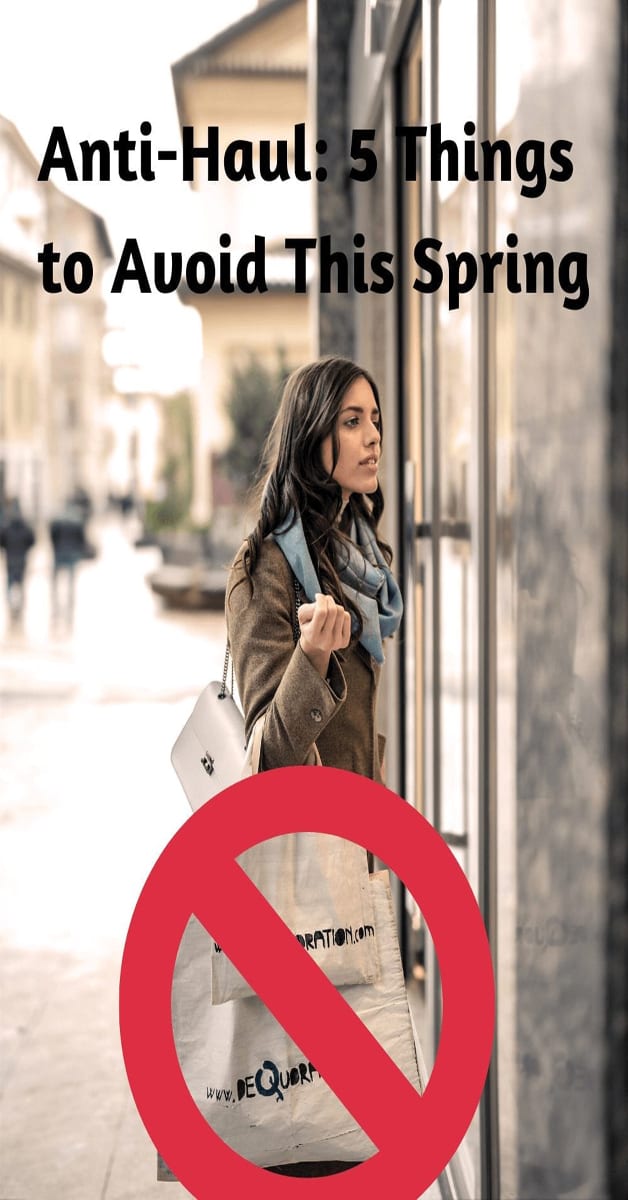Anti-Haul. That is one common term thrown around the Internet today. You can find it in blogs, YouTube videos and many more. This speaks about the things we should avoid for different abhorrent reasons. Including a product’s environmental impact.
The Anti-Haul phenomenon is beyond product categories because it speaks of a movement that counters the norm of a capitalistic society. Such movement is called “Anti-Consumerism”, which rejects the excesses of modern life. Whenever you see or hear an Anti-Haul content piece, you will learn what things we should disavow to live a simpler and more fulfilled life.
Whatever type of consumer you are, it is easy to find slight upgraded or completely unnecessary products that you can do without. The trend of recognizing these redundant products and then calling out manufacturers is a great practice that supports sustainability and an active approach in saving the environment.
5 Things to Anti-Haul this 2020
I asked several experts and bloggers about things we should avoid and put in everyone’s Anti-Haul list this spring.
1. The 2020 Macbook Pro 13 Inch

I feel like this model is hardly an upgrade worth buying, as it is only 0.1 GHz faster than the previous model. I’m talking about the top model of the 13 inch lineup that stops at a processor that is 2.4 GHz compare to the last year’s model that was 2.3 GHz. Everything else is almost the same.
2. A new vacuum cleaner

Vacuum cleaners have really come far from the bulky and noisy machines that you had to log around the house. Even so, the newest ones aren’t worth the upgrade in my opinion. While LED lights are a nice feature to have, as it improves visibility of dirt and dust, it’s not something that makes vacuuming without it impossible. I’d like to stick to my older model for at least a few more years.
suggested by Bryan Stoddard of Homewares Insider
3. Buying “new” clothes – Nicole Robertson of Swap Society
- The fashion industry is one of the biggest industrial polluters, putting more greenhouse gases into the environment than all international flights and maritime shipping combined.
- Fashion is the second-largest water polluter.
- Fashion has created a massive waste issue—every second, a garbage truck of textiles is sent to landfill or incinerated.
Slowing our fashion consumption is a better choice for the planet, and for our wallets. That’s why I created Swap Society, an online clothing swap for women and kids that makes it fun, easy and affordable for members to mix up their wardrobes in a sustainable way.
When you swap or shop secondhand, you can reduce a garment’s carbon, waste and water footprint by 73%, while helping to prevent the garment from winding up in a landfill. Something as simple as swapping a shirt with a friend instead of buying a new one can save enough water for a person to drink for 2 1/2 years!
4. Plastic water bottles – Stacy Caprio of Deals Scoop
One thing I refuse to buy because it is simply wasteful is plastic water-bottles at the grocery store.
Water is plentiful and free when you’re in the US. You can easily fill up a glass of water or metal water bottle when you’re at home or on the go using your own free water dispenser.

To me, it makes no sense to waste money purchasing plastic water bottles. When you will just throw them soon after drinking. With this, you will even waste the environment’s energy. Recycling and repurposing them can be tedious and dangerous at worst. At the end of the day, it’s just as easy to not use them and save a lot more energy and money in the first place.
5. Commercially produced sunscreens – Erik Levi of Holistic Noo Tropics

Not only are they filled with toxic, endocrine-disrupting ingredients that are absorbed into your bloodstream, but they are also terrible for the environment. The chemicals run off your body and into the water.

Scientists are now discovering associations between sunscreens and damage to coral reefs and sealife. The nanoparticles in the spray sunscreens also emit toxicity into the atmosphere.
Conclusion
The first step in Zero Waste Management is to refuse. Lessen your consumption on unnecessary things. Learn to say no and firmly commit to avoiding wasteful products.
This Anti-Haul list covers just a few, a mere tip of the iceberg in the things we should do without. Or look for better alternatives. There are many other things we should consider not buying again. We just need to examine the products before we buy and ask ourselves this crucial question:
“Is this something that can cause harm to the environment in some way?”
What about you? What other things do you see in daily life that you feel needs to be in an Anti-Haul? Share your ideas in the comments section.





One Comment
Leave a ReplyOne Ping
Pingback:Zero Waste Lifestyle: Beyond The Hype - Zero Waste Lifestyle System